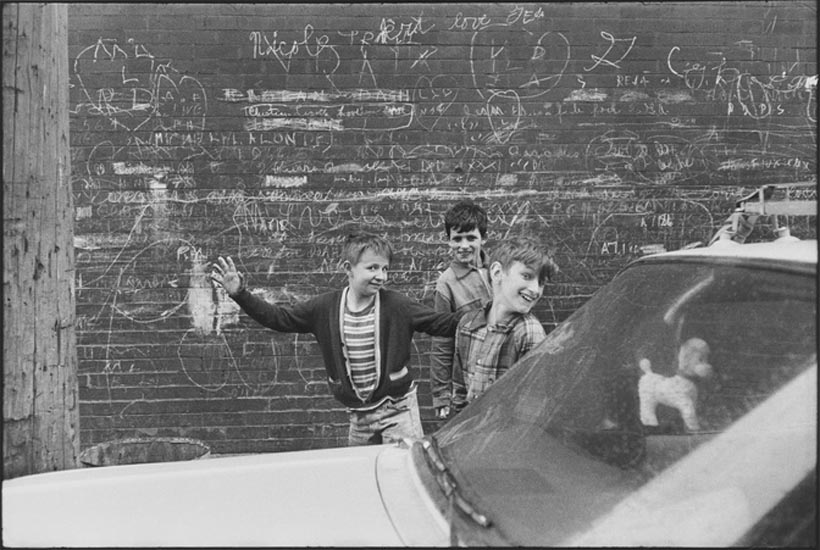
1964, printed 1985. Gelatin silver print, 9 3/8 × 14 1/4 in. (23.8 × 36.2 cm). The Menil Collection, Houston. © Henri Cartier-Bresson/Magnum Photos
Expositions du 11/3/2016 au 24/7/2016 Terminé
The Menil Collection 1515 Sul Ross Street Houston, 77006 Texas États-Unis
Henri Cartier-Bresson (1908–2004) is considered to be a founding father of contemporary street photography—a movement dedicated to capturing the flux of life in the public sphere. Life Is Once, Forever: Henri Cartier-Bresson Photographs, an exhibition of approximately 50 photographs from the Menil Collection, looks at the photographer’s pioneering career and humanist vision.The Menil Collection 1515 Sul Ross Street Houston, 77006 Texas États-Unis
Cartier-Bresson, born into a wealthy Parisian family of textile manufacturers, was a self-taught cosmopolitan with a lifelong knack for discovering consequential events and individuals. He began taking pictures as a child, but distinguished himself in the early 1930s after purchasing a handheld 35mm camera and beginning to shoot, he said, on the run, or à la sauvette, in locations around the world. His early images were made in Mexico, Spain, and North Africa and were prized by the Surrealists for their intricate, collage-like compositions made of surprising human gestures and architectural settings.
During World War II, he escaped from a German prisoner of war camp to document Europe’s devastation in photographs and films. After the war, he went on to create thousands of images of newsworthy, popular-interest, and chanced-upon subjects as well as hundreds of casual and revealing portraits of cultural luminaries. In 1947 Cartier-Bresson and a small group of like-minded photographers formed the legendary photographic agency Magnum to promulgate their new, life-engaged photojournalism.
In his career-defining 1952 book, The Decisive Moment, Cartier-Bresson summarized his approach as "the simultaneous recognition in a fraction of a second of the significance of an event as well as the precise organization of forms." His street scenes, landscapes, portraits, and especially his depictions of individuals absorbed in the everyday are filled with uncanny, telling details and infused with humor, mystery, and pathos that have been widely imitated but never equaled.
In the early 1970s, at the instigation of longtime friends and collectors John and Dominique de Menil, Cartier-Bresson reviewed his many thousands of contact sheets with the idea of creating a succinct record of his work. He originally chose 385 images, which were printed by his Paris laboratory Photographic Services in 1972–73. Versions of this archive reside at the Bibliothèque Nationale, Paris; the Osaka University of Arts, Japan; the Victoria and Albert Museum, London; and at the Menil Collection, which has more than 600 unique images by Cartier-Bresson.
This exhibition is generously supported by the Robert J. Kleberg, Jr. and Helen C. Kleberg Foundation; Lazard Frères & Co.; Gilbane Building Co.; Eddie and Chinhui Allen; Suzanne Deal Booth; Adelaide de Menil Carpenter; Susan and Francois de Menil; Franci Neely; Leslie and Shannon Sasser; Anne and Bill Stewart; and the City of Houston.

